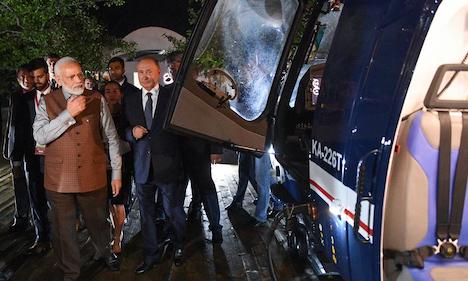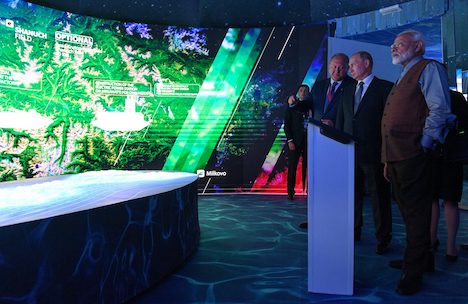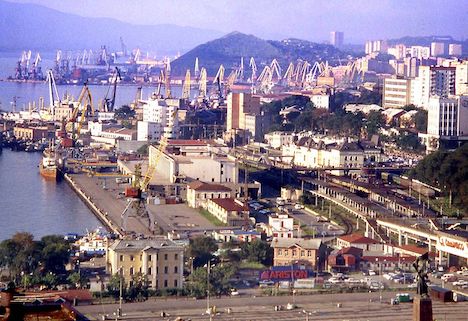There’s no way to follow the complex inner workings of the Eurasia integration process without considering what takes place annually at the Eastern Economic Forum in Vladivostok. BRICS for the moment may be dead – considering the nasty cocktail of economic brutalism and social intolerance delivered by the incendiary “Captain” Bolsonaro in Brazil. Yet RIC – Russia-India-China – is alive, well and thriving. That was more than evident after the Putin-Modi bilateral summit in Vladivostok. A vast menu was on the table, from aviation to energy. It included the “possibility of setting up joint ventures in India that would design and build passenger aircraft,” defense technologies and military cooperation as the basis for “an especially privileged strategic partnership,” and a long-term agreement to import Russian crude, possibly using the Northern Sea Route and a pipeline system.”
All that seems to spell out a delightful revival of the notorious Soviet-era motto Rusi-Hindi bhai bhai (Russians and Indians are brothers). And all that would be complemented by what may be described as a new push for a Russia-India Maritime Silk Road – revival of the Chennai-Vladivostok maritime corridor. Arctic to the Indian Ocean Chennai-Vladivostok may easily interlock with the Chinese-driven Maritime Silk Road from the South China Sea to the Indian Ocean and beyond, part of the Belt and Road Initiative. Simultaneously, it may add another layer to Russia’s “pivot to Asia”. The “pivot to Asia” was inevitably discussed in detail in Vladivostok. How is it interpreted across Asia? What do Asians want to buy from Russia? How can we integrate the Russian Far East into the pan-Asian economy? As energy or trade corridors, the fact is both Chennai-Vladivostok and Belt and Road spell out Eurasia integration. India in this particular case will profit from Russian resources traveling all the way from the Arctic and the Russian Far East, while Russia will profit from more Indian energy companies investing in the Russian Far East. The fine-print details of the Russia-China “comprehensive strategic partnership” as well as Russia’s push for Greater Eurasia were also discussed at length in Vladivostok. A crucial factor is that as well as China, Russia and India have made sure their trade and economic relationship with Iran – a key node of the ongoing, complex Eurasian integration project – remains. As Russia and India stressed: “The sides acknowledge the importance of full and efficient implementation of the Joint Comprehensive Plan of Action on the Iranian nuclear program for ensuring regional and international peace, security and stability. They confirm full commitment to Resolution 2231 of the UN Security Council.” Most of all, Russia and India reaffirmed an essential commitment since BRICS was set up over a decade ago. They will continue to “promote a system of mutual transactions in national currencies,” bypassing the US dollar. One can easily imagine how this will go down among Washington sectors bent on luring India into the Trump administration’s Indo-Pacific strategy, which is a de facto China containment mechanism. Luring Chinese capital In terms of Eurasian integration, what’s happening in the Russian Far East totally interlocks with a special report on China’s grand strategy across the Eurasian heartland presented in Moscow earlier this week.
As for Russia’s own “pivot to Asia,” an essential plank of which is integration of the Russian Far East, inevitably it’s bound to remain a complex issue. A sobering report by the Valdai club meticulously details the pitfalls. Here are the highlights:
That will certainly change in the medium term as Beijing is bound to turbo-charge its “escape from Malacca” strategy, to “build up mainland exports of resources from Eurasian countries along its border, including the Russian Far East. The two recently built bridges across the Amur River obviously could be of help in this respect.” What this means is that Vladivostok may well end up as a major hub for Russia and India after all. Source URL |


